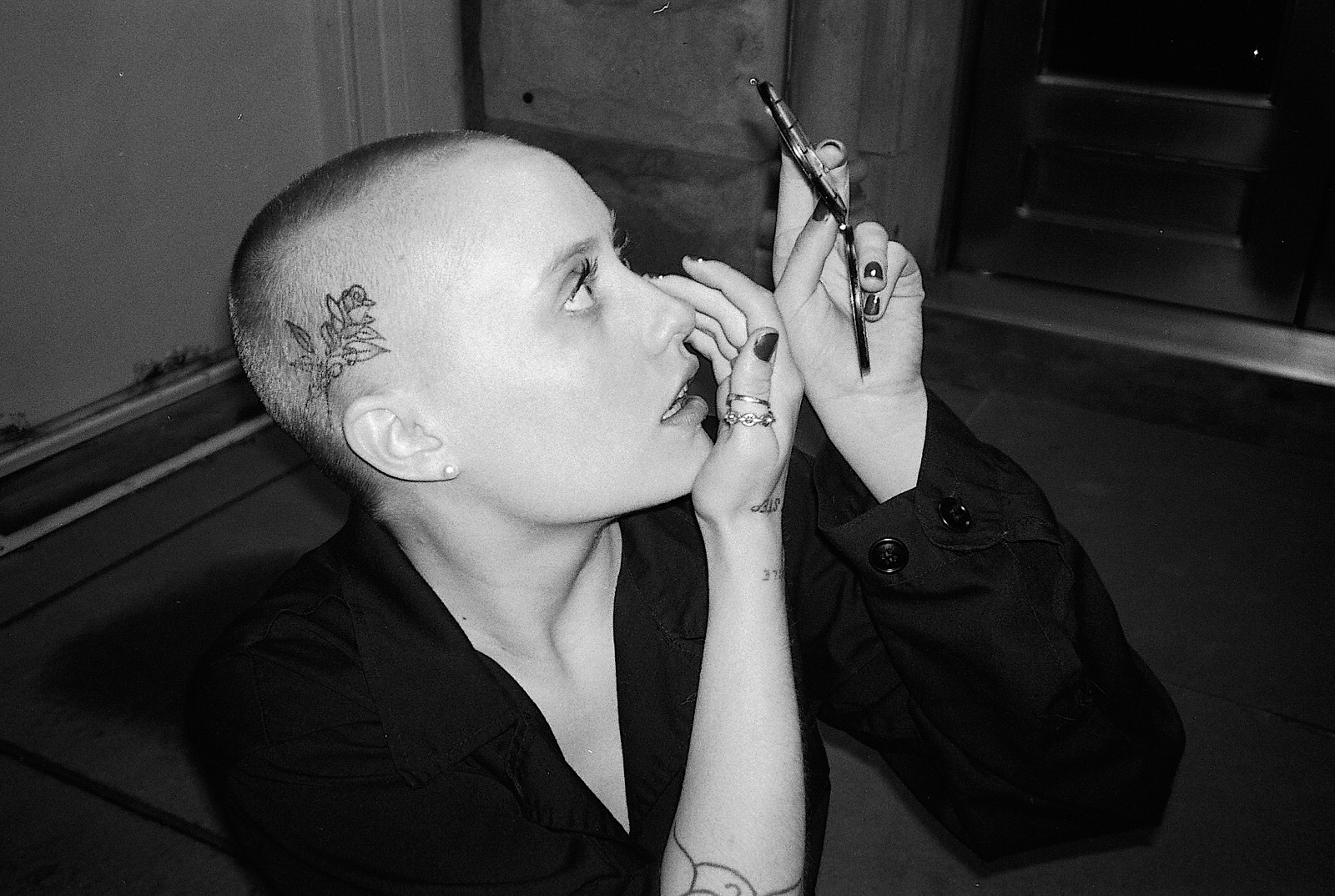i-D Hair Week is an exploration of how our hairstyles start conversations about identity, culture and the times we live in.
The fashion world is ever-evolving — it adapts to the underground waves of street style, interacts with the heavily-followed aesthetics of tastemakers, and even echoes political movements. In the past few years, designers and models alike have taken social issues like feminism and #BlackLivesMatter onto their runways and Instagram feeds. With the increased visibility of women, queer folks, and people of color in fashion, one poignant hairstyle movement is notably on the rise: nouveau bald.
Unlike the past few years’ resurgence of the punk-inspired female buzz cut, nouveau bald embraces a close shave that’s practically void of hair. It’s an extreme stance against Western beauty ideals that dictate long hair as a signifier for attractiveness, youth, and overall sexual viability in women. Nouveau bald throws the oppressive rules of what “feminine” should be right out the window.
Like most aesthetic movements, nouveau bald is an homage to the greats. Sudanese-British model Alek Wek popularized the hairstyle in the 90s as she revolutionized the norms of “supermodel,” while lesbian model Ève Salvail walked the Gaultier spring/summer 94 show with a dragon-tattooed and virtually bald head. Irish musician Sinead O’Connor’s near-baldness was a deliberate statement against the male gaze in the 80s. Model Pat Evans shook the Euro-centric fashion bubble in the 70s with her unconventional baldness and outspoken opinions on the toxicity of whitewashing women of color.
Today, young women and non-binary individuals are wielding the power of nouveau bald to make a statement. Slick Woods (Simone Thompson) and Adwoa Aboah, two models who have rocked fashion with their unapologetic senses of self, are defined amongst other traits by their barely-there hairstyles. Aboah, the founder of woman-centric mental health platform Gurls Talk, is very open about her struggles with depression, addiction, and even her past issues of self-esteem within the modeling industry. Thompson, a rising darling on the Gypsy Sport and Yeezy runways, confronts beauty standards with her badass tooth gap and “Just do you” attitude. Both model’s radical self love and individuality are what make their nouveau bald do’s all the greater.
The close shave also takes a stance against noxious norms surrounding gender and sexuality. Model Jazzelle Zanaughtti, who rose to fame after photographer Nick Knight DM’ed her on Instagram, sports an androgynous style complete with oversized outfits, gold grills, and a bleached-blonde take on nouveau bald. “I love to feel my masculinity just as much as I love to feel my femininity,” she told i-D in an interview. Los Angeles-based performance artist boychild leverages her gender-ambiguous presentation to explore themes of spirituality and healing that go beyond physicality — her lack of hair plays a huge role in her process. “My (trans) body is intrinsic to my work and life,” boychild told i-D in an interview. “I think people are fascinated by the androgyny at first. But it’s not specifically about gender.”
For Alana Derksen, the cool Canadian Instagram girl gone model, shaving her head was an act of control and self-exploration. “I shaved my head after a big fight with my twin brother,” she explains. “It was kind of an existential crisis or cry for help — I didn’t premeditate it at all.” Growing up in a strict household in Calgary, Alberta, Derksen escaped her stifling environment through the internet and creativity. An independent and curious soul, she began secretly giving herself stick n’ poke tattoos at age thirteen (she has a rose on her head) and even ran away to New York City at eighteen.
Derksen admits she entertained the idea of shaving her head but feared her family’s reaction. But after some time with her nouveau bald aesthetic, she’s learned a lot about self-image and societal pressures. “Someone’s hair doesn’t even scratch the surface on understanding the complexity of personal identity,” she says. “I’ve always been very feminine but look like a dude. My toughest boyfriend had long hair and it would always get in the way when he’d fight.”
Unfortunately, not all people adopt Derksen’s mature views of identity and appearance. Her original Instagram account was deleted after a tense situation where she called someone out for bullying over her hairstyle and body. IRL, she faces some discrimination as well. “I get a lot of backhanded compliments like, ‘You’re still so pretty even though you have a shaved head,'” she explains. “I see straight-laced people look me up and down, looking at my hair and tattoos, and there’s such an obvious judgement in their expression. I hate having to feel like I’m playing defense all the time.”
For women like Derksen — white, cis, economically comfortable — gendered signifiers like hair length are still contested when they don’t meet the historical standards of “attractive” or “feminine.” As a burgeoning model, graphic designer, and photographer, Derksen’s ability to stand her ground in the face of intolerance is the ultimate exercise in sovereignty; no matter how hard people try, they have no authority over her self expression.
Moving forward, fashion’s trend towards androgyny and away from strict gender roles is making more room for trailblazing muses like Derksen, Aboah, Thompson, Jazzelle, and boychild. Social media’s growing relevance in the industry continues to shine a necessary spotlight on faces like Mackenzie Tallulah Jones who challenge feminine sexuality with their radically shorn heads. With such strong voices continually questioning conventional beauty, the nouveau bald movement is slowly but surely changing the game.
Credits
Text Braudie Blais-Billie
Photography Alana Derksen
